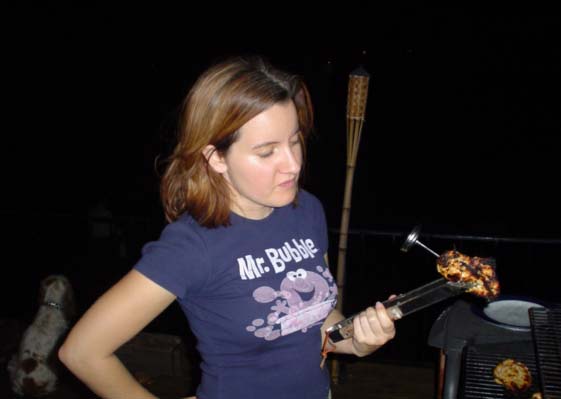The N.Y. Times is once again promoting the fashionable over the factual when it comes to food safety. Yesterday, Mark Bittman wrote in his quest for a good burger, that, "well-done meat is dry and flavorless, which is why burgers should be rare, or at most medium rare. The only sensible solution: Grind your own. You will know the cut, you can see the fat and you have some notion of its quality."
Dangerous microorganisms like E. coli O157:H7 and salmonella cannot be sensed by sight and are equal opportunity pathogens — they will happily adulterate so-called quality cuts of meat.
Bittman also says that "if you grind your own beef, you can make a mixture and taste it raw," adding that, "To reassure the queasy, there’s little difference, safety-wise, between raw beef and rare beef: salmonella is killed at 160 degrees, and rare beef is cooked to 125 degrees."

Kids, don’t try this at home. Or anywhere else. Ground beef of any sort needs to be 160F.
Even with quality cuts like steaks or roasts, dangerous bugs can contaminate the exterior of the meat. That’s why rare steak is relatively safe with an external searing. In the process of grinding, whatever pathogens are on the outside become internalized in the burger — whether the meat is ground at a factory or the kitchen counter-top.
Bitman concludes by saying that cooking time depends on the size of the burger but that his take about 6 to 8 minutes total, for rare to medium-rare.
Except that color or time are lousy indicator of doneness. The only way to properly tell if a burger is microbiologically safe is to stick it in, using a digital meat thermometer (preferably a tip-sensitive one). Most people, trying not to sicken their family or guests, overcook burgers. A 160 F burger, verified with a thermometer, satisfies and is safe.

Bittman joins Nina Planck, who at the height of the fall 2006 E. coli O157:H7 spinach outbreak, wrote in the Times that E. coli O157:H7 "is not found in the intestinal tracts of cattle raised on their natural diet of grass, hay and other fibrous forage. … It’s the infected manure from these grain-fed cattle that contaminates the groundwater and spreads the bacteria to produce, like spinach, growing on neighboring farms."
The natural reservoirs for E. coli O157:H7 and other verotoxigenic E. coli is the intestines of all ruminants, including cattle — grass or grain-fed — sheep, goats, deer and the like. The final report of the fall 2006 spinach outbreak identifies nearby grass-fed beef cattle as the likely source of the E. coli O157:H7 that sickened 200 and killed 4.
Being a fashionable foodie is fun for some; a few facts can keep it safe. Don’t eat poop.
